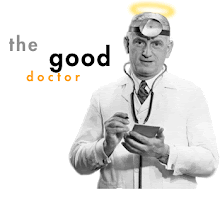We all have days when there's no time to get to the gym. So we wondered: Which close-to-home cardio activities blast fat fastest?
Wonder no more. Here are the top seven fat-and-calorie burners, from Los Angeles based celeb trainer Ramona Braganza, who has helped shape the amazing bodies of stars like Jessica Alba, Halle Berry, and Anne Hathaway.
Try any one of these, and you'll boost your metabolism for up to a whole day afterward. One small workout, one giant payoff.
1. Inline skating
Burns 425 calories in 30 minutes
Surprised? While skating might be so much fun you forget you're actually working out, it's also numero uno on our list when it comes to blasting fat and calories.
The big burn stems from the side-to-side movement of your thigh and butt muscles (demanding more from your body than the straightforward motion of our number-two activity -- running). And your core gets involved in a big way to keep you balanced.
What's more, you get all these benefits without putting too much stress on your knees and other joints. Skate at a strong, steady pace. Don't forget your helmet, wrist guards, and knee and elbow pads.
Boost the burn: Alternate one minute of hard skating with one minute of medium-paced strokes.
Health.com: Get a beautiful butt in 4 weeks
2. Running
Burns 374 calories in 30 minutes
The typical runner's shape is sleek and lean, and there's a reason for that: The major running muscles -- legs, butt, core -- happen to be the biggest calorie-and-fat-burning muscles in your body.
To get the most out of each stride, swing your arms close to your body, don't lean forward, and keep your feet low to the ground. To lessen impact, land on the middle of your foot, then roll through to your toes.
Boost the burn: Alternate fast and slow intervals, or take to the hills.
3. Jumping rope
Burns 340 calories in 30 minutes
You knew this workout had to be high on the list. After all, it's one of pro boxers' favorite ways to train.
To get the most from each jump, use a rope with handles that reach to just under your armpits when you stand on the middle of it, and follow these top-form tips: Jump with your feet slightly apart and body upright, and keep your jumps low to the ground. Don't have a rope? You'll get the same benefits by doing the movements rope-free.
Boost the burn: Frequently switch up your speed (slow, fast) and style (jumping with one foot, then two feet), or jump rope while you jog.
Health.com: How to jump the weight off
4. Hula hooping
Burns 300 calories in 30 minutes
There's a reason Marisa Tomei and Beyoncé hoop to keep their bodies beautiful -- it's a major fat-and-calorie torcher. To do it yourself, grab an adult-sized hoop (they're larger and heavier than kids' hoops, making them easier to spin); you'll know you have the right size if it reaches your chest when you stand it up in front of you.
No fancy moves required, either. Simply keep it going around your waist. To start, stand with one foot in front of the other and shift your weight back and forth (versus around in a circle). And don't worry if you're less than perfect at first; you'll still knock off major calories, plus get better every time you spin.
Boost the burn: Get how-tos for advanced moves and a fun workout at Health.com/hula-hoop.
Health.com: Hoop yourself slim
5. Tennis
Burns 272 calories in 30 minutes
Don't think you need to round up a partner or trek all the way to a court to break a super sweat with racket in hand. (Though if you have a pal and a nearby net, you'll burn the same calories.) Simply find a flat area near a wall or garage door that you can hit the ball against.
Alternate forehand and backhand shots -- then see how many you can do in a row without goofing. Stand 10 to 25 feet away, which will force you to hit harder. Even practicing your serve will get your body in burn mode, because you'll have to run and bend to pick up your missed balls.
Boost the burn: Try to hit the ball consistently for 50 or 100 strokes. "Having a goal will make you work harder to reach it," Braganza says.
Health.com: 30-minute workout, no gym required
6. Dancing
Burns 221 calories in 30 minutes
This may not be the biggest calorie-burner in the bunch, but it's still an excellent -- and fun! -- metabolism booster. (Just look at Kelly Osbourne, who jump-started her amazing 42-pound loss on Dancing with the Stars.)
The key is to keep the tempo high, choosing songs with fast rhythms like Latin or Bollywood, and don't rest between songs.
Try Braganza's favorite trick: Download a workout's worth of your favorite tunes. Begin with an upbeat inspirational song think "Just Dance" by Lady Gaga, then move on to songs with increasingly faster tempos. Slow the beat toward the end to cool down.
Boost the burn: Use your arms! Raise them in the air and move them to the beat.
Health.com: Dance your way to toner abs and legs
7. Walking vigorously
Burns 170 calories in 30 minutes
That's right, walking actually made our list. Full disclosure, though: A leisurely stroll with a friend won't cut it. You should be walking briskly enough that it's difficult to keep up a steady conversation.
To get the most from your biggest calorie-burning muscles -- legs, butt, and core -- take short, quick steps, keep your torso upright, and pump your arms back and forth (not side to side) in time with your stride. With each step, land on your heel and roll through to your toes.
Boost the burn: Alternate two minutes of brisk strides with one minute of as-fast-as-you-can-go walking (or jogging).































































